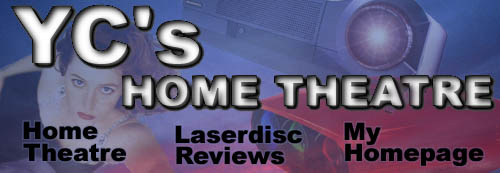
 |
| Home Theatre Advice for Newbies
Yes, even though I'm no expert, people still ask me for advice whether via e-mail or in person. In my efforts to assist them, I've actually had to learn something about Home Theatre. I may make an attempt to sort this out into some coherent whole, but for now, its all in random point form :) People with existing Hi-Fi systems have it much better as they already have a good 2 channel stereo system. All they need to do is to add a processor, an additional amp and rear speakers. Of course, this provides the perfect excuse to upgrade your stereo system and use the old amps/speakers for surround duties :) 1 box or Seperates?
Heres a simple checklist:
But ignore:
Upgradeability The standard HT system is a HT receiver. This is usually a 5 channel amp with Pro-Logic decoding. The important question to ask is whether or not this receiver has 5 analogue inputs, i.e. 1 for each amplifier channel. If it does, then an outboard processor can be used should you want to move up to DD/DTS. Midi Home Theatre systems
AC-3 RF and AC-3 Digital
HT speakers that come with cheap '1 manufacturer' packages sound awful
Ok, so not all speakers are painful to listen to. I had a bad experience listening to 'Twister' at a Sony Home Theatre Demo at Funan Centre, but most speakers just suffer from horribly overblown midbass and unnatural midrange forwardness. Yes, they do sound better than a cheapo TV set, but do you have to set your standards that low?
Cheap Centre Speakers - Why Bother In Hi-Fi, people buy components so that they can get sonic improvements. On the other hand, the home theatre beginner seems to buy centre speakers because of some vague understanding that surround sound is '5 channel' and that the more channels the better. Have you attended a HT demonstration where they've shown that adding a sub-S$200 centre speaker improves the sound? I won't go on about phase differences from centre speakers messing up the stereo image etc... OK, so you're on a budget, and you need suggestions; there are basically the standard British brands I'm aware of:
Instead of buying 5 speakers and a subwoofer, put all the money into 4 speakers, the front and rears. Buy the subwoofer next and the centre last. Don't get worried about having 1 channel in your receiver 'unused'; it probably draws current from a common power supply, so if left unused, theres more current left for the other channels. (hint: so when a manfacturer says 50 watts for 5 channels, does he mean that the receiver is able to deliver 50 watts to ALL channels simultaneously? Usually the answer is a big fat no). When you purchase front speakers from these manufacturers, or other manufacturers with a good reputation in producing speakers for the hi-fi community, you'll be getting speakers that are able to play music as well. Also, their centre speakers are good quality as well (about the price of a pair of their front speakers), and so, you can pick them up later as an upgrade to your system. Oh yeah, the subwoofer is also an upgrade. The REL Q-50 clocks in at $695, the Q-100 at $895 and the Strata II at $995. (note: the Q-100 is louder than the Strata II and is an Alan Sircom favourite, but Strata II owners can take note of RH's review in Stereophile). Video In/Out :-avoid I'm sure it has something to do with this silly PAL/NTSC problem, but I know some people who have NTSC LD players, they plug it into the video in of the 1-box solution, and connect the video out to the multisystem TV. But they don't get any signal. However, after connecting the video out of the NTSC player directly into the TV, everything's fine. Then I've seen video outs from some of these 1-box solutions working with one multisystem TV but not another, whilst plugging the player direct always works. I can't explain this, I just recommend plugging it direct. What? There are essential onscreen menus which your billion-button remote control accesses? Well, I don't know why this onscreen menu thingy is prevalent in cheap 1-box solutions but not in seperates (the Sony EP9ES is ridiculously simple and easy to use).
Using your Surround Processor as a DAC Yes, your AC-3 processor can be used to decode the standard 44.1Khz PCM digital data stream from a CD player. However, the standard "cheap" AC-3 processors, OK heres the list arranged according to price:
Basically, if you have a half decent $500 CD player, I can assure you that using a surround processor as a DAC is not a good idea. The sound quality of the processors are about the same as 'budget' players in that brand's line. Hi-Fi Choice has extolled the virtues of the EP9ES as a DAC, but it should be noted that they're saying its 'good' as compared to budget players a fraction of the EP9ES' price. When I use the EP9ES as a DAC and the XA7ES/D790 LD player as transports, I notice a high noise floor cause by some kind of 'digital noise' coming through the speakers even though there is no signal from the CD player. Also, the volume control is digital, and if the digital volume control is way down low (in the metaphorical 9 o'clock' position or whatever), you lose out a lot in terms of sound quality.
TV settings
DTS/DD?
Those funky subwoofer + 5 satellite systems are usually not compatible with Dolby Digital
|